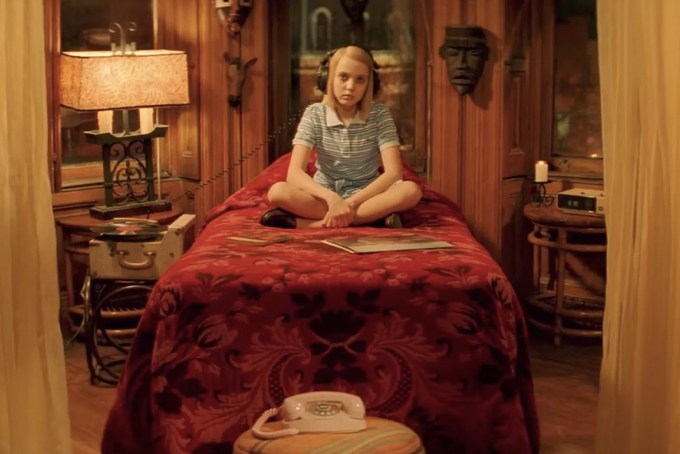Famed for his precise cinematography and whimsical scripts, Wes Anderson has created some of the most sumptuous onscreen interiors of all time—from the palatial suites of The Grand Budapest Hotel to a maximalist New York brownstone in The Royal Tenenbaums. Ahead of the premiere of his latest candy-coloured extravaganza, Asteroid City, at the Cannes Film Festival, we look back at the idiosyncratic American director’s most eccentric sets, crammed full of interiors inspiration.

Rushmore (1998)
Wes Anderson’s penchant for eye-catching production design was visible from the very beginning. In Rushmore, the dusty, academic surroundings of a Houston private school are transformed with a series of quirky details: wall-to-wall maps, Tiffany lamps and parodic nods to Ivy league institutions.

The Royal Tenenbaums (2001)
The most memorable onscreen interior from Wes Anderson is surely the home of the dysfunctional Tenenbaum family. Set over four floors in an elegant New York townhouse, it includes a ballet studio, a theatre and a ballroom lined with the children’s artwork. Our favourite? Margot’s room with its ornate masks, vintage record player and zebra-print wallpaper—that is, of course, if you can tear your eyes away from her impeccable wardrobe.

The Life Aquatic with Steve Zissou (2004)
How to decorate a submarine populated by a team of oceanographers on a mission to destroy the infamous “Jaguar Shark”? With a subtle Seventies colour palette, moody lighting and plenty of nautical touches.

Hotel Chevalier (2007)
In this short film about two lovers reuniting in a Parisian hotel room, the interiors steal the show entirely. Lemony walls, Persian rugs, elaborate cornicing and antique furniture provide a surreal backdrop. The final effect? Like Amélie on acid.

The Darjeeling Limited (2007)
Three estranged brothers take a train across India in this kooky comedy, which has one of the most vibrant sets of any Wes Anderson film. Production designer Mark Friedberg borrowed a train from Indian Railways and transformed the interior into a riot of clashing prints, retro wood-panelling and hidden portraits of Indian icons. And, of course, no train compartment is complete without a set of monogrammed suitcases—Anderson’s were custom-made by Louis Vuitton.

Fantastic Mr Fox (2009)
The most stylish stop-motion film ever made, Fantastic Mr Fox had us wanting to decorate like our woodland friends. After all, has acorn-print wallpaper and forest-green upholstery ever looked so good?

Moonrise Kingdom (2012)
Set on a sun-drenched island in New England, much of Moonrise Kingdom takes place in fields and forests, but the interiors are equally dreamy. The Bishop family home is the perfect seaside sanctuary, with chintzy throws, woven carpets, mismatched furniture and lots of cosy nooks to curl up in.

The Grand Budapest Hotel (2014)
Is any film set more swoon-worthy than The Grand Budapest Hotel’s? Monsieur Gustave’s art nouveau establishment is a symphony of colour: cherry-red carpets, glittering chandeliers, verdant palm trees and walls as sugary pink as a Mendl’s chocolate box. Shot in a 20th-century department store in Görlitz, Germany, the interior was later stripped back to create the minimalist Sixties hotel of the prologue.

The French Dispatch (2021)
From the lemon-coloured offices of the titular magazine, with its pastel-hued typewriters, rotary phones and vintage fans, to the retina-searing Le Sans Blague café and countless book-filled writers’ apartments, every set in this anthology comedy following a crew of madcap journalists is meticulously designed. In telling their stories, production designer Adam Stockhausen and set decorator Rena DeAngelo mined French New Wave films for inspiration, and scoured prop houses and flea markets for mid-century modern sofas, antique tables with barley-twist legs, and sculptural light fixtures.
This article was originally published on British Vogue.





